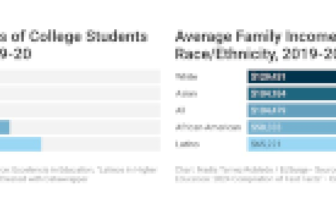Why Neuroscience and Technology Are Key to Helping Us Rethink How Students Learn

[ad_1]
Most teachers who work in education today have studied — or at least are familiar with — VARK, a learning theory first introduced by Neil Fleming in 1987. VARK suggests that students can best accelerate their knowledge acquisition via one of four core learning styles: visual (V), aural (A), read/write (R) or kinesthetic (K). It’s a wildly popular concept that has led to prevailing beliefs that students perform better if we cater to their natural learning styles.
For years, VARK has been used to help teachers and students identify preferences for how academic material is presented and consumed. Early in my career as a university instructor, this method was a foundational cornerstone in the classroom. While there are benefits to utilizing the VARK approach in the classroom, there is uncertainty about its overall effectiveness when it comes to learning outcomes.
However, recent studies in neuroscience, along with the advent of digital instruction, have provided a unique environment to test various hypotheses related to metacognition — and the results are shedding new light on the efficacy of various teaching practices and how those practices help students learn and retain more in the classroom.
It may be too premature to establish a general pattern of learning that encourages retention for the majority of students in a single classroom. Yet, with significant findings in key areas related to neuroscience and technology, educators are now one step closer to understanding the biological and environmental underpinnings of the learning process, a review of which may serve as a starting point for discussions and reconsideration of novel instructional methods. This information could potentially help educators, administrators and parents alike in facilitating the best possible learning environments for students.
Neuroscience: How Sleep Prepares the Brain for Spaced Learning
One of the most intuitive facts supported by research is that students need sleep to cement their academic lessons. It’s something teachers can attest to as they often see their most sleep-deprived students fail to perform at their highest potential.
Brain science also confirms that sleep is essential for neurons to connect and link the complex learning steps that students are exposed to during the day, also known as the brain-derived neurotrophic factor (BDNF); these are tiny molecules that fuse during sleep cycles and are quite literally the glue used to connect dots of information while students slumber. Higher levels of cognition and increased attention are noted among young school-aged children with an increased level of this sleep-induced effect.
As it turns out, the results of such neural fusion are intellectually enhanced when coupled with what’s known as spaced learning, a concept educators have known about for some time but only recently uncovered the science behind it. It involves limited exposure to academic subjects in small blocks over a period of time to build skill sets. At the cognitive level, this gives cerebral connections time to strengthen, resulting in higher learning retention for students.
Knowing that a combination of sleep and spaced learning is more heavily associated with knowledge retention than presentation methods or student preferences can offer meaningful insights. Though educators have no control over the quality of sleep their students achieve, awareness of the impact this has on classroom success can encourage teachers and instructors to consider which controllable elements they wish to address in the classroom.
Technological Approaches: Next-Generation Learning
The gift of technology and the digital classroom is that students can now pick the most convenient, fastest way to consume material. Technological integration supports dynamically rich environments where multiple educational modalities are employed simultaneously. Using multimedia in this way enables instructors to embrace every core area of VARK within a single presentation of course materials. This blended approach not only reaches a wide range of student preferences, it also opens new doors for pedagogical practice.
Technology certainly permits the expedient dissemination of information, but emerging studies show it also provides fertile ground for the enrichment of what’s referred to as next-generation learning (NGL). The integration methods related to NGL are individualized and offer students the opportunity to personalize their studies through the vehicle of technology.
Successful supports involve interactive software that allows teachers to record, edit and embed multimedia and expand intuitive presentation formats that encourage highly modernized skills such as crowdsourcing, which represents outside-the-box thinking in the field of education.
Such applications have built-in features that allow instructors to encourage students to investigate a plurality of concepts, drawing from a variety of attention-retaining methods in classroom presentations. An even more exciting consequence of their use in education points to tech integration as a potential equalizer of learning differences. These practices allow instructors to tailor lessons in ways that are not only engaging for diverse learners but also encourage students to sharpen skill sets that embody real-world relevance.
The Theory of Connectivism and Community-Informed Learning
Young people emerging from the pandemic exhibited a unique set of academic needs that signaled to educators that students desperately needed them to strengthen and revitalize their commitment to student-based learning theories. Intriguing learning theories sometimes organically originate with students themselves, and the technologically driven idea of connectivism in education is one such example.
Rooted in cyber-learning, connectivism fosters the best of community-informed learning supported by technologically driven materials. Students elevated the use of connectivism during quarantine as they taught themselves to synthesize and meta-analyze various sources of online information. Today, this represents a shift in classrooms where digital communication blends with the in-person exchange of information, ideas and perspectives. Features of this model are fundamentally based on a free flow of individual or collective expression, integrated with virtual, and often globalized, value applications.
This quickly evolving learning style has helped students to make sense of their personal experiences as they navigate a plethora of digital materials related to their intellectual pursuits. Teachers using this model generally view themselves as guides in a more student-directed educational process, rather than center-stage bearers of information, which is a key feature of many post-pandemic learning environments.
On the Horizon
Teachers know conversations about learning styles are ongoing dialogues, and what’s next on the horizon is a bit of a mysterious haze for everyone. For example, in January of this year, Elon Musk announced that one of his companies had successfully implanted a chip into the brain of a human subject.
While the implications for medicine and science are vast, educators have a vested interest in the outcome of events like this, too. It’s unknown how long it will be before this kind of technology is available to students sitting in classrooms, or whether a blending of technology and neuroscience changes the landscape of learning theory — nonetheless, it’s a possibility that certainly can’t be dismissed, at this point.
One thing that is certain, however, is that instructors are teaching during a time that requires receptivity to a rapidly changing set of dynamics, something that I am acutely aware of in my own classrooms. While traditional learning models like VARK still have a place in an educator’s toolbox, there is now access to a previously unimaginable trove of learning options — and contemplating critical pieces of data can be essential in framing the foundations of modern classrooms. With this knowledge in hand, teachers are capable of reshaping and redefining pedagogical strategies in real-time as they embrace new opportunities to optimize learning for students.
[ad_2]
Source link







